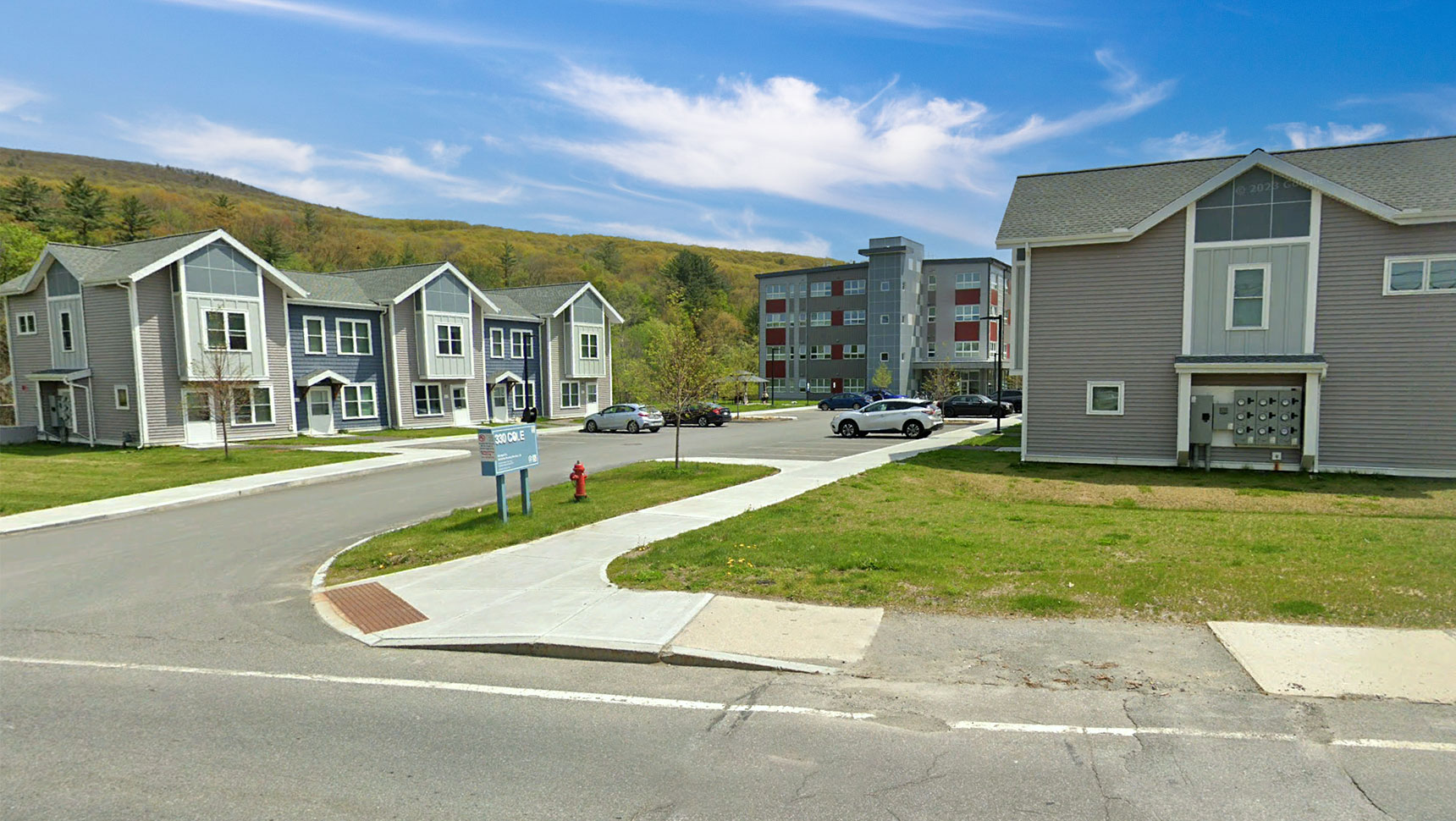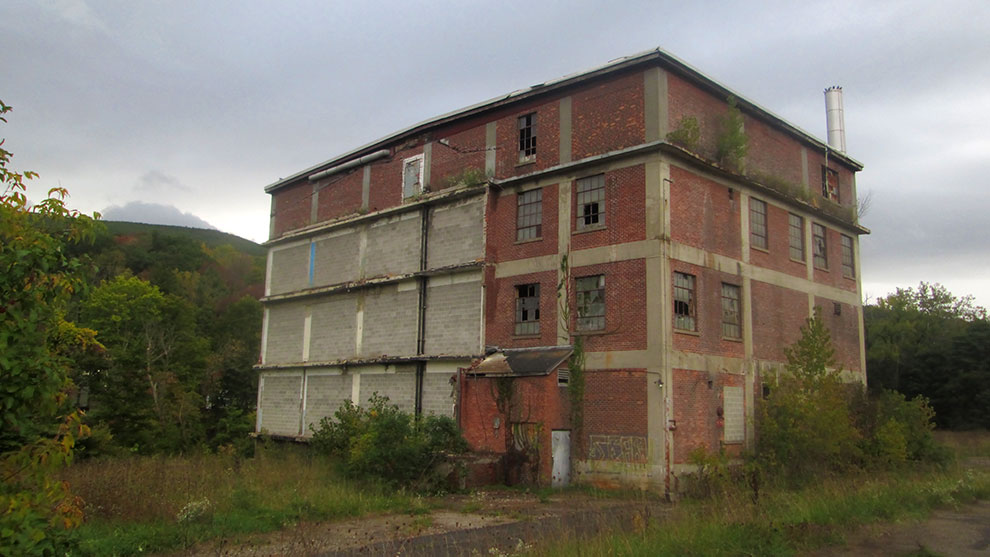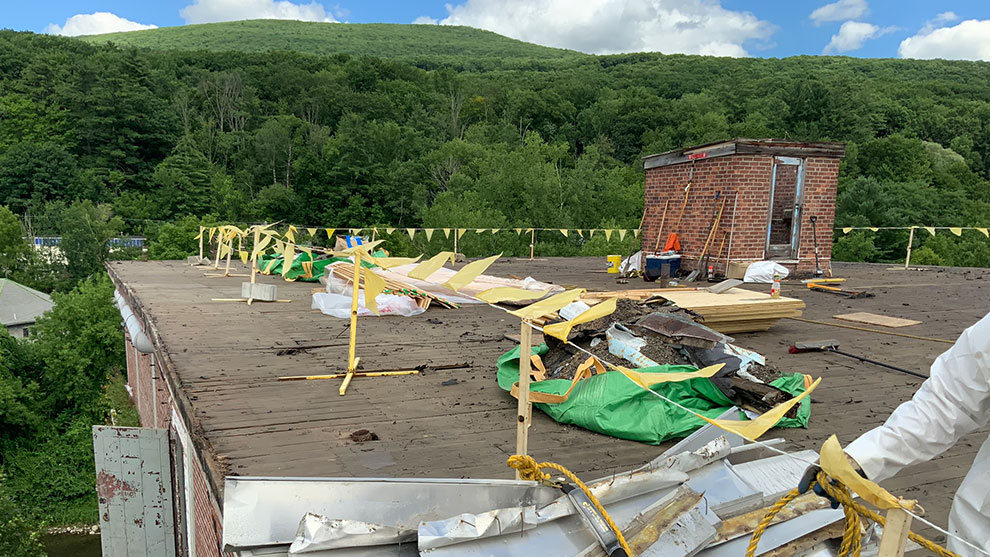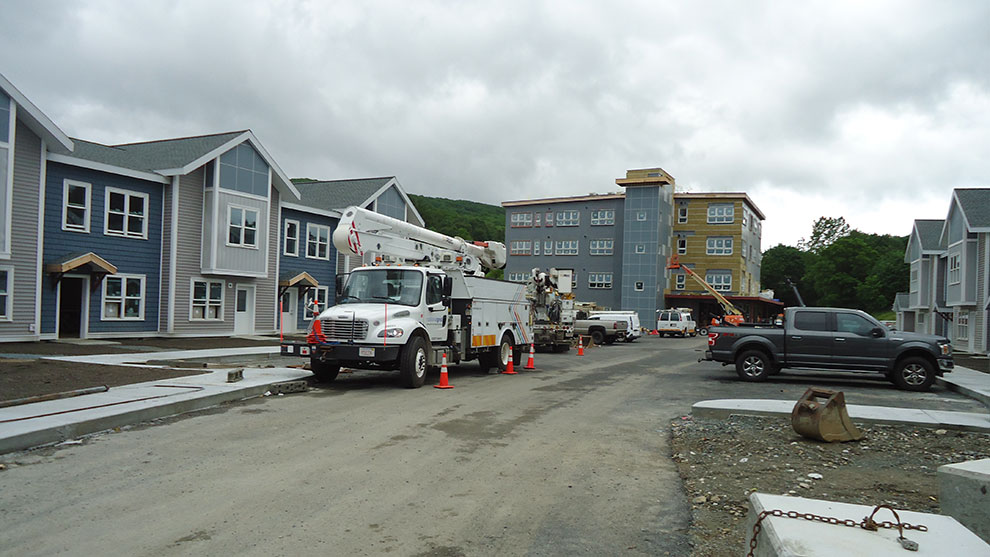Brownfield Revitalization to Replace Housing Lost to Flooding – 330 Cole Avenue


Hurricane-related flooding of the Hoosic River destroyed the Spruces Mobile Home Park, which had provided affordable housing options in Williamstown. Skyrocketing real estate values, driven by the popularity of Williamstown as a retirement community, coupled with the desire to preserve the Town’s bucolic character, meant that feasible properties for affordable housing development were limited. The Town looked for solutions in an unlikely place and engaged Fuss & O’Neill to help.
Williamstown had one remaining Brownfield site, which was home to the former Photech facility. Abandoned since the late 1980s, this was a blighted, contaminated site that was located on the edge of the Town’s center. Though the absence of acquisition costs was a significant advantage, remediation and demolition costs needed to prepare this site for residential development prompted the Town to consider the U.S. EPA Brownfields Cleanup Grant Program.

Construction of affordable housing can be challenging due to the imbalance between construction costs and future financial returns. Identifying and securing a variety of funding sources is critical to ensuring that these projects are financially feasible. Though the EPA Brownfield Program was a viable funding option, the Town and its development partners were not experienced with this type of grant program. However, Fuss & O’Neill has experience winning U.S. EPA Brownfields Cleanup Grants for our clients.
Fuss & O’Neill authored a successful U.S. EPA Brownfield Cleanup Grant application for this project. Through this process, we took a leadership role and coordinated with the Town and the project development team to evaluate key project characteristics, delegate necessary technical research, and compile winning theme ideas. The team developed a compelling storyline that highlighted the community’s critical need for support, that demonstrated the numerous ways that the project was poised for success, and that framed the project in a context that demonstrated alignment with the mission of the U.S. EPA’s Brownfields Program.
Our leadership, grant-writing acumen, and knowledge of the U.S. EPA’s Brownfields Program were key components to securing $200,000 in funding to address environmental cleanup needs as part of the housing development project.

Fuss & O’Neill’s environmental professionals assisted the Town with permitting and soil management to ensure that residual contaminants were properly handled during construction, that the site was safe for multi-family residential use, and that compliance with applicable cleanup regulations was maintained.
Fuss & O’Neill’s hazardous materials specialists provided comprehensive hazardous building material abatement services on the site. This began with a thorough assessment program to identify materials that needed to be safely abated prior to construction. We developed technical specifications and abatement workplans to facilitate receipt of accurate bids and compliance with regulatory programs. We provided full-time project monitoring and clearance testing to ensure that the abatement was performed safely and thoroughly.
Fuss & O’Neill’s extensive experience coordinating cleanup concurrent with construction projects was vital to the timely completion of the project. We assisted the Town at all steps in the construction process, including soliciting contractor bids, reviewing contracts, navigating procurement requirements, and overseeing the contractor.

This project resulted in the construction of 41 units of affordable family housing, including 23 apartments in the refurbished former mill building and 18 new townhomes. Remediating building- and soil-based contaminants helped transition a long-standing industrial blight to a place that many can feel safely and securely at home.